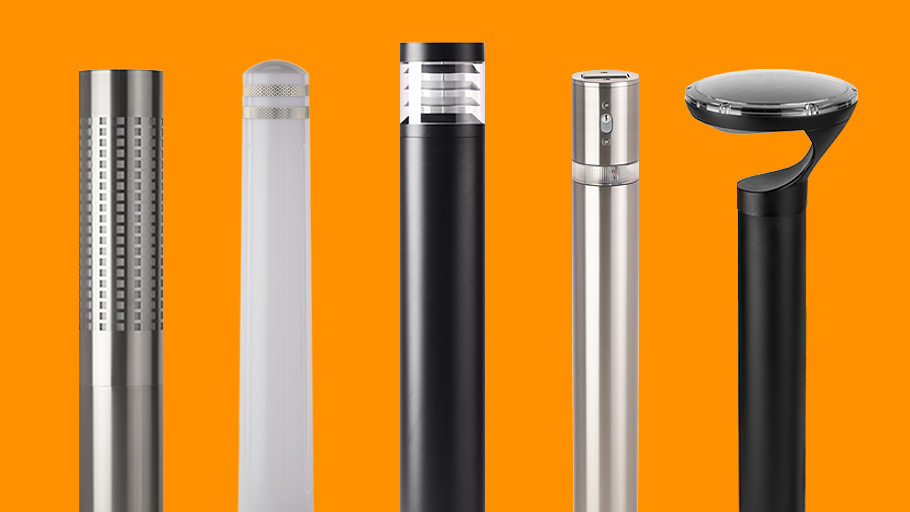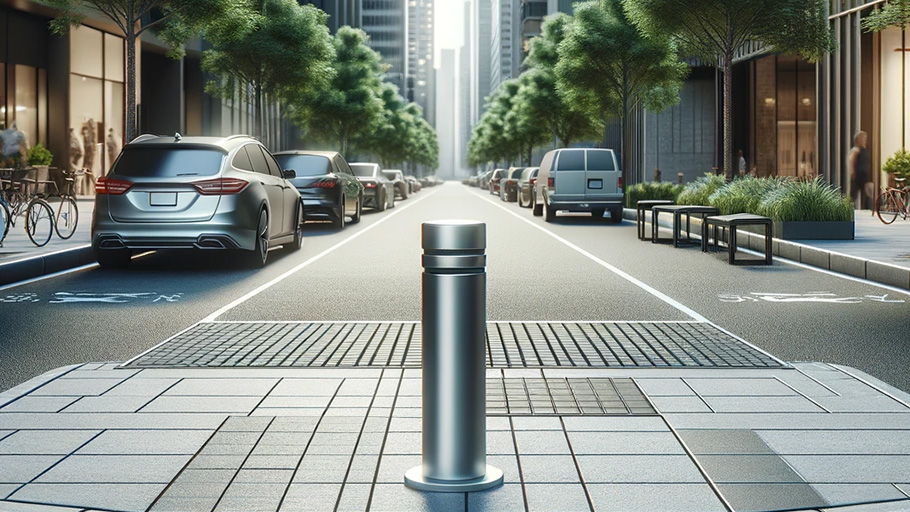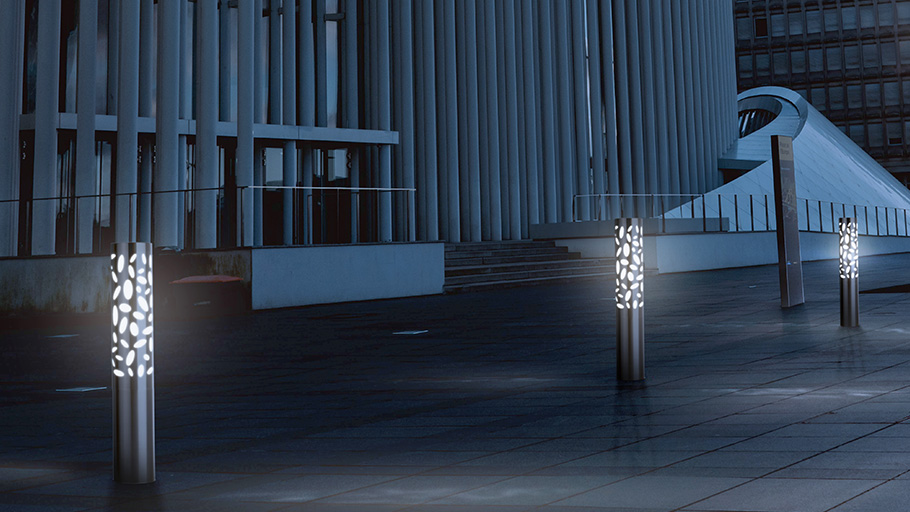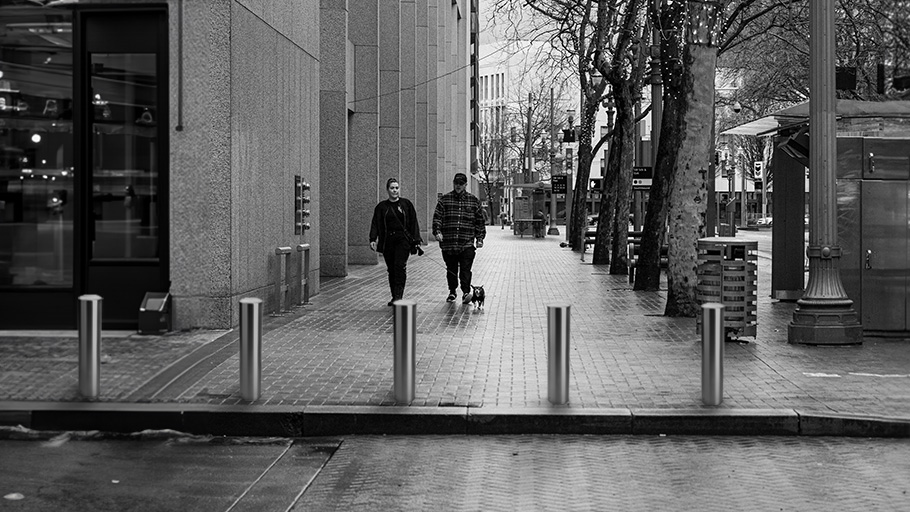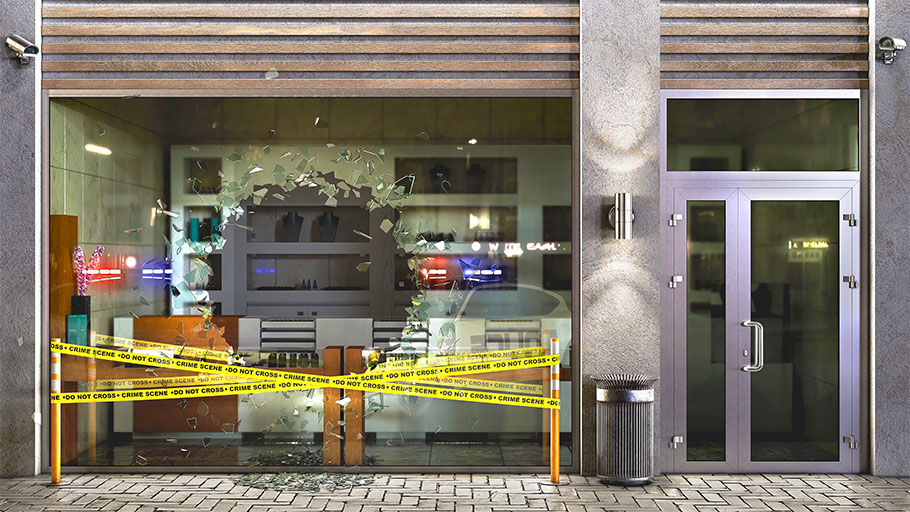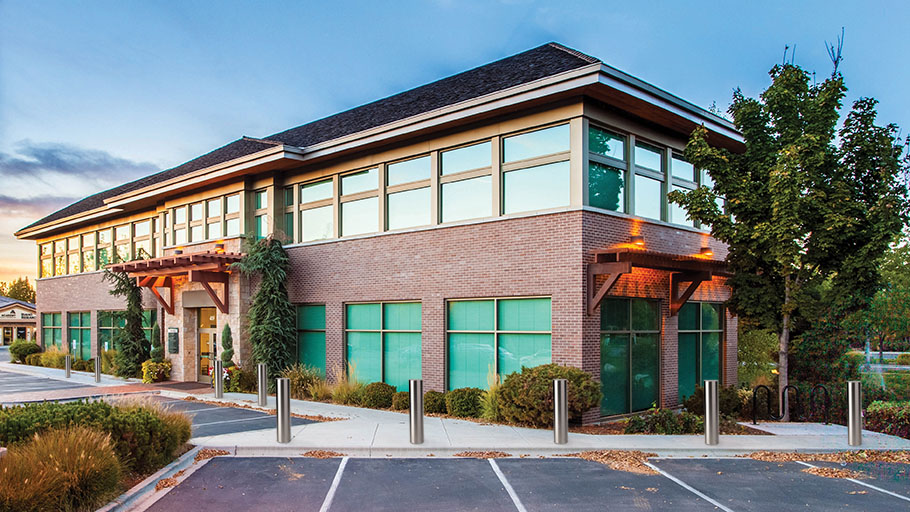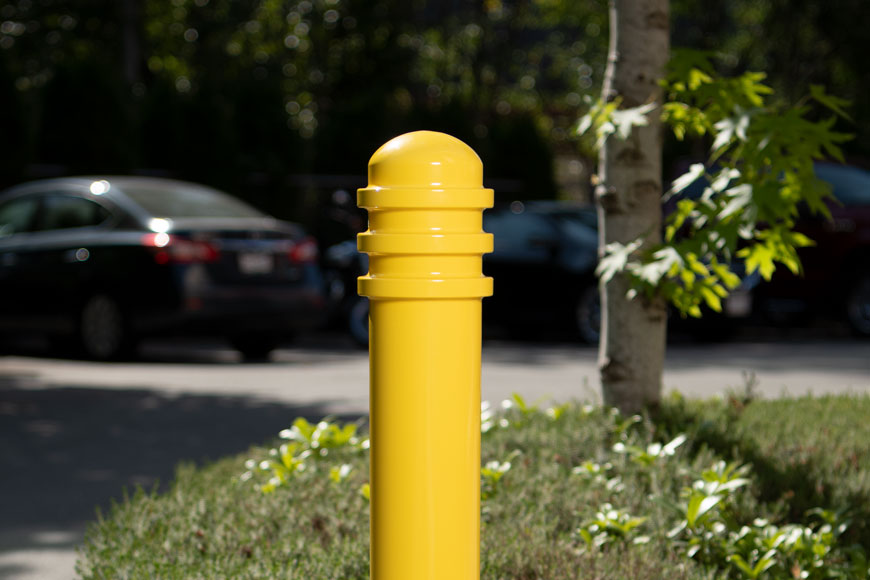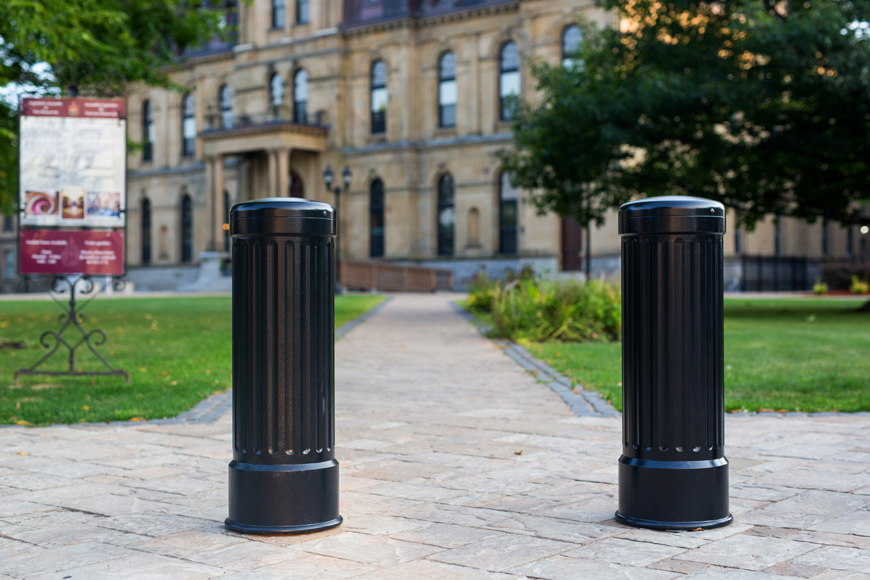Considerations when installing outdoor bollard lights
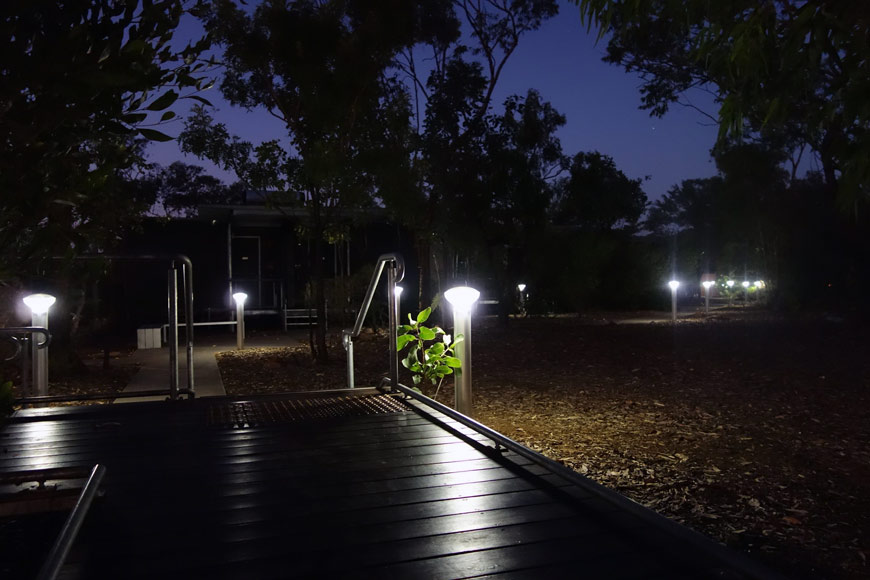
What are bollard lights?
Bollard lights are short posts that provide landscape lighting along pathways and other outdoor locations. They offer safety for pedestrians and accentuate the beauty of a site. Light bollards are useful where lamp standards would be impractical or undesirable. Their low profile minimizes light pollution while preventing accidents by illuminating people and pathways.
Installation of lighting bollards
Outdoor illuminated bollards can be installed either on a hard-wired electrical grid or as standalone solar light fixtures. Which electrical source is best depends on the size and scope of the project; although the lights themselves provide the same benefit, there are pros and cons to each approach.

Hard-wired electrical bollards
Hard-wired bollard lights are any fixture that require wiring to a central energy source. Most of the time, the wiring is run underground in conduits that connect to a central electrical box. The bollard may have simple on/off capability or might be wired for “smart” services, including central control, dimming, or diagnostics.
Outdoor wiring is built to be stable against interruption. Most of the time, if the electrical grid is up, the lighting bollards will be on when they’re supposed to be. Depending on soil, voltage, and geographical considerations, wiring trenches are dug anywhere from 6 to 24 inches down.
Trenching historically required opening the earth, possibly disturbing hardscape. Today, with the development of trenchless technology like micro-tunneling, surfaces can be left relatively undisturbed. Conduits made of metal, PVC, or insulation protect the wiring underground. Circuits are installed with a ground fault circuit interrupter (GFCI) that will cut the power if someone digs into the wire.
Most of the work with hardwired light bollards is done in the planning and installation stages, especially now that LED lights, with low maintenance needs, are standard.
When planning a site, an electrician is necessary to calculate voltage drop, a phenomenon in which wiring length affects available power. The electrician will find proper wire gauges and carefully plan of where lights go. As with any electrical work, local regulations and permitting are important and an electrician is needed. In many jurisdictions, this sort of work needs both a trades permit and city inspection.
Low-wattage LED bollards are allowing the newest generation of hard-wired bollards to provide energy savings over more traditional outdoor lamps. A 2012 study at the San Diego State University ran a pilot project to compare the cost of energy for LEDs vs. HID (high-intensity discharge) lighting bollards. Measuring demand between the two lamps produced the following output:
The study further showed that the total cost of energy per bollard per year was $60.00 for the HID, compared to $14.00 for the LED bollards, with no loss of illumination on the pathways.
Hard-wired bollards offer a site designer the option of setting up control at a switch. Sometimes bollards are dimmed or brightened in response to time of day or time of year. A hardwired lighting grid makes wiring in a single point of control an easy task, which then gives the lighting engineer flexibility and control at the main source.
PROS AND CONS OF HARD-WIRED BOLLARD LIGHTS
ADVANTAGES
DISADVANTAGES
- Reliable monitoring through wired communication
- Single point of control
- Lighting profiles may be reprogrammed at the main junction or switch
- Lower price per bollard
- Many models have simple maintenance: no battery, onboard computer, or solar panel to maintain
- Won’t be disrupted by lack of sun, snow, or particulate
- Never decreases illuminance in response to low battery
- LEDs are long lasting—often have 50,000 hours use
- Higher installation cost
- Permits, inspection, and electrician oversight necessary
- Ongoing (if low) energy cost
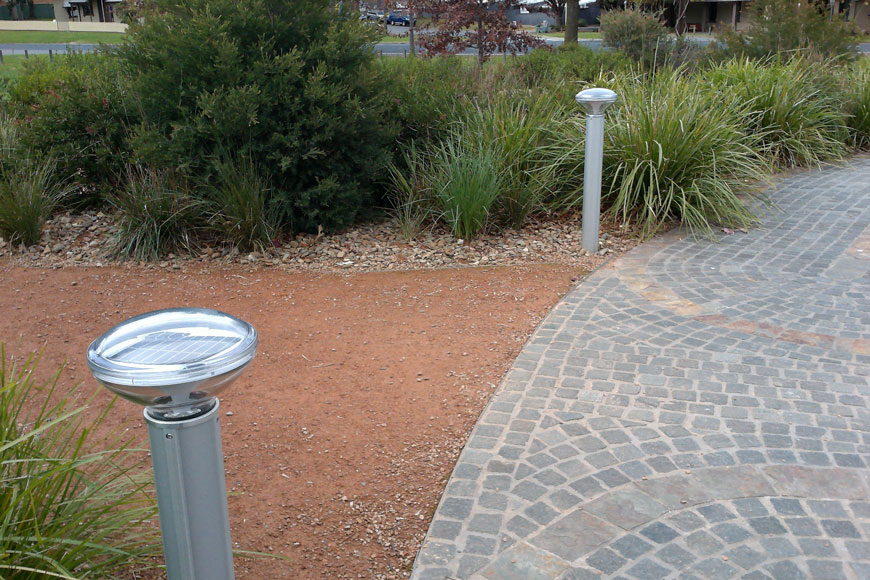
Solar light bollards
Outdoor bollard lights with onboard solar panels are self-sufficient, not needing a lighting grid to support them. This allows for easier installation into existing hardscape surfaces. Only the bollard footing need be planned, so no trenching is necessary.
Home-consumers have had residential versions of these bollards for years: solar path-lights for the garden, available at the hardware store, which store energy and cast a little light for a few hours after sundown. Residential technologies were not developed enough, for a long time, to be used as public infrastructure. Stand-alone solar useful for larger sites have greater lighting needs for safety and security. Public infrastructure must also be resistant to vandalism.
Innovative enhancements to the materials and design of bollards, batteries, and LEDs have allowed engineers to design solar bollards for use in public spaces. These are durable against vandalism and weather damage. Onboard, they have large energy storage capacities, and produce enough light to illuminate larger areas.
Our intelligent solar bollards offer a further evolution in design. Grid-level control is brought to the stand-alone bollard. Advances in computing technology allow a site manager to program these solar lights to produce the same sort of graduated lighting that is often done with a grid, so that they are brightest when needed—generally in the hours near sunset and dawn. An additional benefit is that the bollards can also sense and respond intelligently to their environment without the site manager’s oversight. Smart solar bollards watch weather patterns and battery levels, and conserve energy when there has been a stretch of dull weather by adapting power output.
This smart-conservation allows the bollard to continue to cast light even if there are one or more days in which it does not receive sunlight. An autonomy function will move the bollard into a power-saving mode. If starting with a full battery, the bollard can run for up to two weeks without receiving any sunlight.
In Seattle, a place known for overcast skies, the solar light bollard will generally experience three autonomous days in the summer and fourteen over the course of the winter.
Of course, the location of the bollard does matter. Locations very far north, which experience only a few hours of sun per day in winter, or spots where the bollard is mostly in shade, may prevent the bollard from getting enough light to function optimally. These situations can require hard-wired bollards.
PROS AND CONS OF SOLAR BOLLARD LIGHTS
ADVANTAGES
DISADVANTAGES
- Less disruption to hardscape
- More compact without external wires, so lower risk of disruption/accident
- Independent electrical source means utility service disruption does not affect lighting
- LEDs are long lasting—often have 50,000 hours use
- Lower installation costs
- No ongoing energy cost
- Environmentally friendly renewable energy generation
- New developments have made bollards tough against vandalism and wear
- Smart-technologies can allow greater autonomy and more output over time
- Higher price per bollard
- Battery replacement an ongoing maintenance cost
- Deep snow or particulate may block solar panels, necessitating brushing-off maintenance
- Can handle several days without light, but battery storage is not indefinite
- No single point of control
A comprehensive lighting plan
Lighting bollards are an important part of a comprehensive site plan. Illumination helps protect against injury and criminality, yet sites are also concerned with reducing light pollution so that plants, animals, and people get required dark hours. Bollards can help with both, providing pathway lighting that allows people to see each other and tripping obstacles without causing the same glare and light-trespass as standards and sconces installed higher. Hard-wired grids provide reliability in shade and in dark-sky situations. With advancements in technology like LED lighting, battery retention, and onboard intelligent monitoring systems, independent solar bollards are becoming an increasingly viable solution for projects, easily added to existing hardtop and new installations, and requiring less construction during install.

